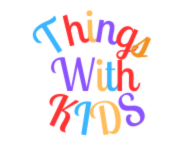What Is a Growth Mindset?
A growth mindset is the belief that abilities and intelligence can be developed through effort, persistence, and learning. Dr. Carol Dweck, a Stanford University psychologist, introduced this concept, highlighting the difference between a growth mindset and a fixed mindset.
- ✅ Growth Mindset: “I can improve with practice.”
- ❌ Fixed Mindset: “I’m just not good at this.”
https://thingswithkids.com/creating-a-productive-and-healthy-home-work-space/When parents encourage a growth mindset, children build confidence, resilience, and a lifelong love for learning.
Why a Growth Mindset Matters for Kids
Developing a growth mindset benefits children in many ways:
- Embrace Challenges: They see obstacles as opportunities to grow.
- Build Resilience: They recover from setbacks more easily.
- Enjoy Learning: They value the process over just the outcome.
- Boost Self-Motivation: They take ownership of their learning journey.
- Handle Criticism Positively: They see feedback as a tool for growth.
How to Foster a Growth Mindset by Age Group
👶 Toddlers (Ages 1–3)
Toddlers are naturally curious. Here’s how to encourage their growth mindset:
- Praise Effort, Not Just Success: Say, “I love how you kept trying!”
- Encourage Exploration: Allow safe risk-taking and exploration.
- Teach the Power of “Yet”: Respond with, “You can’t do it yet.”
- Model Persistence: Show them how you overcome your own challenges.
👦 Preschoolers (Ages 4–6)
Preschoolers start comparing themselves to others. Help them persevere:
- Normalize Mistakes: Teach that mistakes are part of learning.
- Share Growth Mindset Stories: Read books where characters overcome obstacles.
- Celebrate Small Wins: Highlight progress, not just success.
- Encourage Problem-Solving: Ask, “What could you try next?”
🧒 School-Age Children (Ages 7–12)
School-aged kids may fear failure. Support their growth:
- Encourage Grit: Remind them that effort leads to success.
- Discuss Famous Failures: Share stories of people who achieved greatness after setbacks.
- Use Growth Mindset Language: Say, “Your brain grows when you challenge it!”
- Help Them Set Achievable Goals: Break big goals into small steps.
- Promote Positive Self-Talk: Turn “I can’t” into “I’ll try.”
🧑 Teenagers (Ages 13–18)
Teenagers face complex challenges. Strengthen their growth mindset:
- Encourage Constructive Self-Talk: Replace negativity with empowerment.
- Focus on Learning, Not Grades: Emphasize strategy, effort, and persistence.
- Teach Brain Science: Explain how the brain strengthens with learning.
- Promote Healthy Risk-Taking: Support stepping outside comfort zones.
- Celebrate Dedication: Praise commitment in any area they are passionate about.
Parenting Strategies to Encourage a Growth Mindset
No matter your child’s age, these strategies help nurture resilience:
🎯 1. Model a Growth Mindset
Show your child how you learn from mistakes and persist through difficulties.
👍 2. Praise the Process, Not Just the Outcome
Focus praise on effort, strategies, and persistence, not just intelligence.
🛠️ 3. Encourage Challenges
Allow kids to tackle difficult tasks to build their problem-solving skills.
👀 4. Teach Persistence
Explain that mastery takes time, patience, and dedication.
💡 5. Turn Failures into Learning Moments
Ask, “What did you learn?” instead of focusing on the mistake.
📖 6. Use Books and Stories
Select children’s books that show characters demonstrating perseverance and growth.
Final Thoughts
Fostering a growth mindset in kids empowers them to tackle challenges, embrace lifelong learning, and build emotional resilience. By encouraging effort, celebrating mistakes, and focusing on progress, parents can help their children thrive in every aspect of life.
💬 How do you encourage a growth mindset in your kids? Share your tips and experiences in the comments below!

